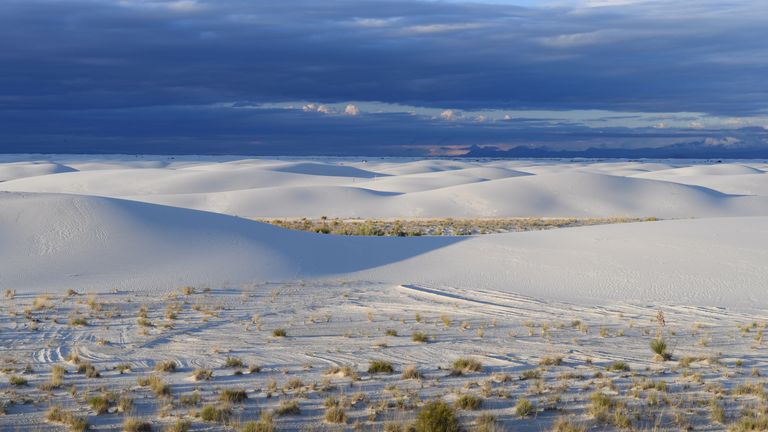Fossilised footprints show early humans were in North America around 23,000 years ago
Fossilised footprints found in the US could hold the answer to a question that has intrigued scientists for many years: When did the first people arrive in the Americas after dispersing from Africa and Asia?
The footprints were found in White Sands National Park, New Mexico, by researchers who dug a trench in the gypsum soil on the park’s western playa.
The footprints were at different depths below the surface, and above and below them were ancient grass seeds.
Scientists at the US Geological Survey used radiocarbon dating to analyse the seeds and concluded that the footprints are up to 22,800 years old.
Many scientists think ancient migration came via a land bridge that connected Asia and Alaska, although this bridge has since been submerged.
But based on evidence such as stone tools, fossil bones, and genetic analysis, others say humans could have arrived in the Americas between 13,000 and 26,000 years ago.
USGS acting Rocky Mountain regional director Allison Shipp said: “This study illustrates the process of science – new evidence can shift long held paradigms.”
While the footprints found in New Mexico confirm when humans were already in the country, they could have arrived even earlier.
The study, published in the journal Science, said fossil footprints are stronger evidence than “cultural artefacts, modified bones, or other more conventional fossils”.
The authors described the footprints, at least some of which are believed to have been left by children and teenagers during the last ice age, as “evidence of a firm time and location”.
David Bustos, White Sands’ resource programme manager who spotted the first footprints in 2009, said: “We knew they were old, but we had no way to date the prints before we discovered some with (seeds) on top.”
The footprints, made of fine silt and clay, are fragile, so the researchers had to gather samples quickly.
“The only way we can save them is to record them – to take a lot of photos and make 3D models,” Mr Bustos said.
Scientists from White Sands National Park and the USGS were assisted by experts from the National Park Service, Bournemouth University, University of Arizona, Cornell University, and the park’s Native American partners.
White Sands National Park is a treasure trove for archaeologists, with the world’s largest known collection of ice age fossilised footprints in the world.
In addition, tracks from the Columbian mammoth, sabre-toothed cat, dire wolf, and other ice age animals have been discovered.
Superintendent Marie Sauter said: “These incredible discoveries illustrate that White Sands National Park is not only a world-class destination for recreation but is also a wonderful scientific laboratory that has yielded ground-breaking, fundamental research.”
Source: Read Full Article



